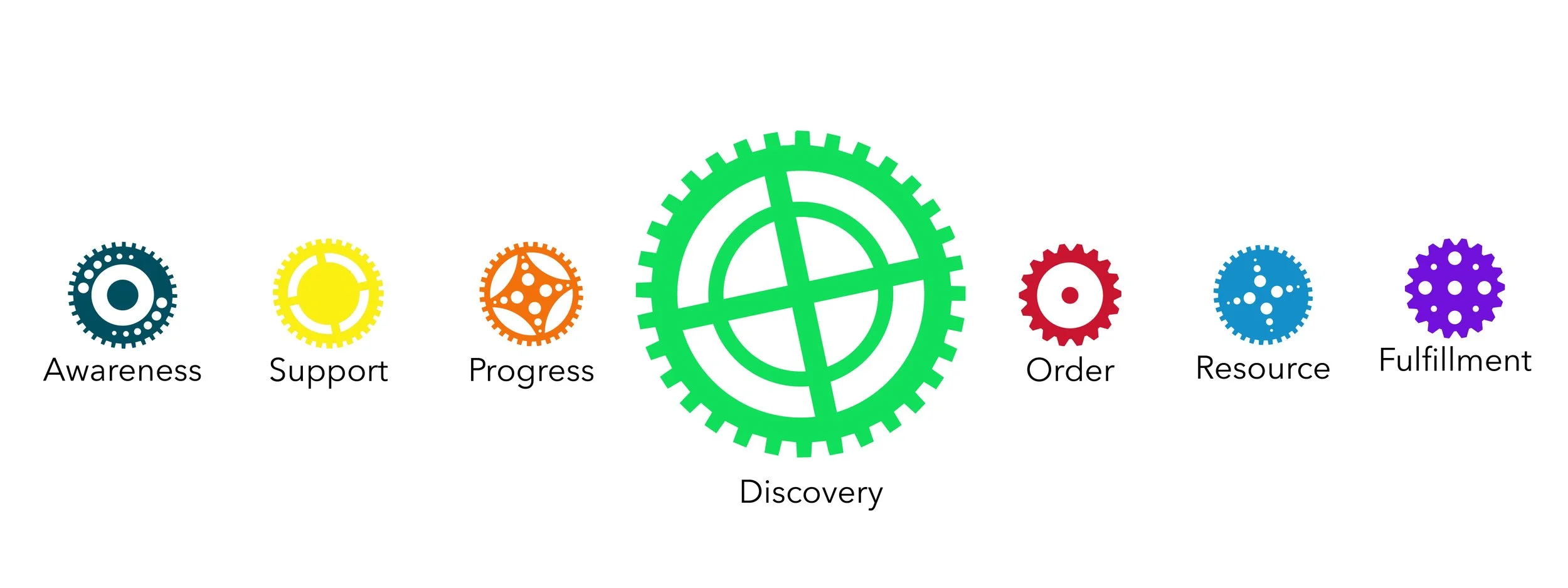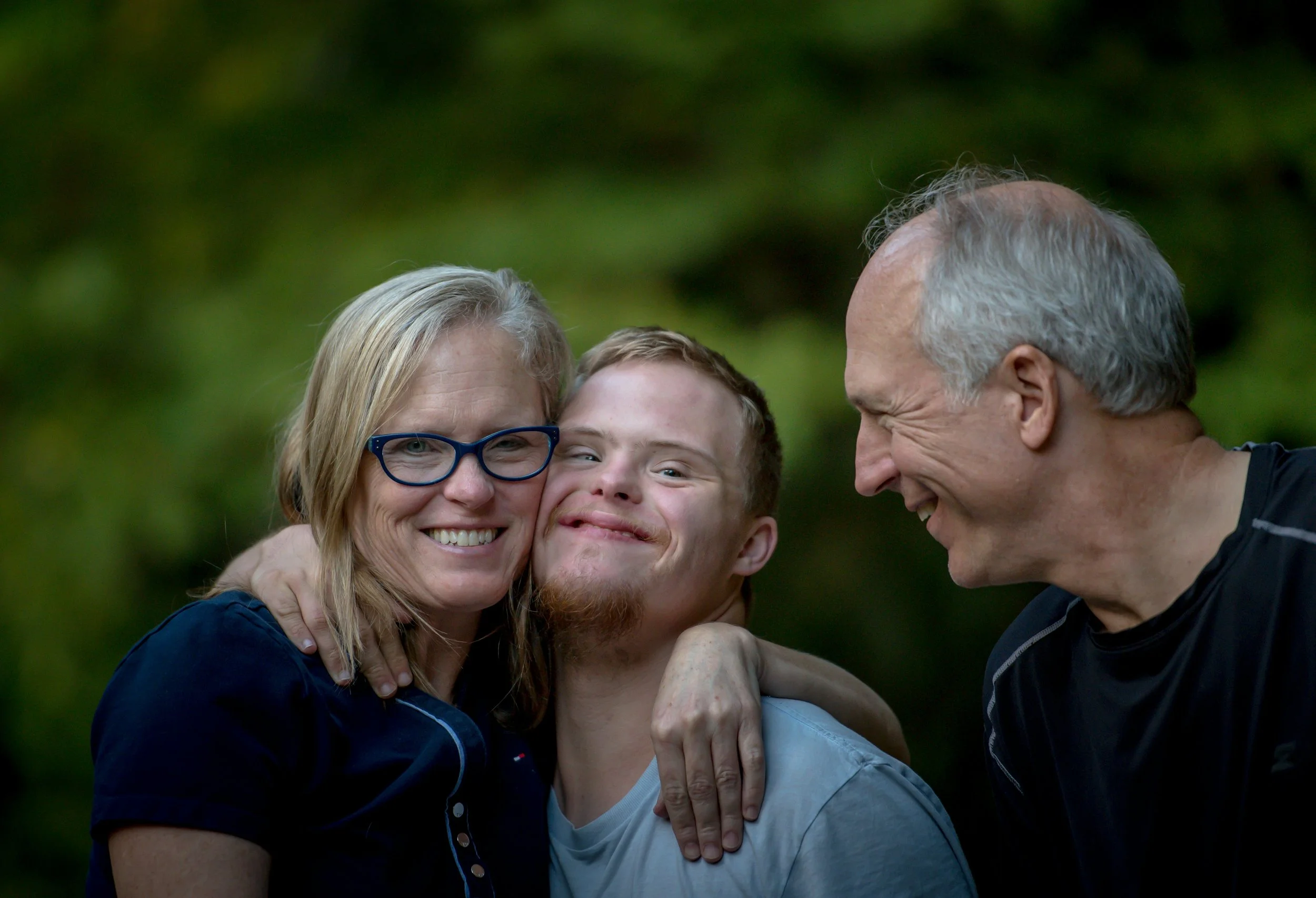CONCEPTUAL DESIGN
WHAT DRIVES YOU?
DISCOVERY
READ ALONG | JUST LISTEN
Conceptual designs are driven by the motivational drive of Discovery, which centers on exploration, learning, and uncovering new insights. For individuals with a Conceptual design, understanding the world through deep inquiry and intellectual curiosity is not merely an interest but a defining purpose. The Discovery drive shapes their approach to knowledge, motivating them to question assumptions, seek clarity, and build a foundation of well-founded understanding that can be shared and applied.
-
In a Conceptual design, the Discovery drive establishes a relentless focus on intellectual pursuit and exploration. Individuals with this drive are naturally curious, viewing every idea, theory, or observation as an opportunity to deepen their understanding. Discovery is the force that pushes them beyond the surface, encouraging them to analyze, investigate, and uncover hidden truths. This drive gives Conceptual individuals a sense of purpose, as they view knowledge as an evolving field where continuous learning leads to ever-greater clarity and insight.
-
Driven by Discovery, Conceptual individuals possess a profound curiosity and a desire to explore uncharted territories of thought. They are drawn to complex ideas, abstract concepts, and challenging questions, seeing each as a doorway to greater knowledge. For them, curiosity is a motivating force that drives them to dig deeper, seek out new perspectives, and approach problems with an open mind. This intellectual exploration is both a means and an end in itself, as they find fulfillment in the journey of learning.
-
The Discovery drive instills an analytical and inquisitive mindset in those with a Conceptual design. They are not satisfied with superficial explanations or assumptions; instead, they prefer to break down ideas and examine each component. This analytical approach enables them to assess information critically, identifying underlying patterns, principles, and connections. Their inquisitive nature leads them to constantly ask “why” and “how,” as they strive to build a robust and well-rounded understanding of any topic they encounter.
-
Conceptual individuals, guided by Discovery, place a high value on knowledge and theoretical depth. They are motivated by the desire to understand the foundational principles that shape how things work. This focus on depth means they are often drawn to research, philosophy, science, or other fields where inquiry and knowledge-building are central. For them, knowledge is not just about gathering facts; it is about creating a cohesive understanding that can be refined, expanded, and shared with others.
-
For Conceptual designs, fulfillment comes from the process of uncovering truths and making meaningful discoveries. They find satisfaction in revealing new insights, whether it’s understanding a complex topic, solving a challenging problem, or identifying an overlooked connection. Fulfillment is rooted in the belief that knowledge has intrinsic value and that uncovering hidden truths contributes to a richer, more accurate understanding of the world. This motivation drives them to continually seek out knowledge, seeing discovery as both personally satisfying and valuable to society.
-
The Discovery drive in Conceptual designs cultivates patience and a strong attention to detail. Conceptual individuals understand that true discovery often requires time, thorough investigation, and careful analysis. They are willing to invest the time needed to explore a topic fully, ensuring that they have a comprehensive understanding before drawing conclusions. This patience allows them to remain focused even on complex or abstract topics, as they appreciate the meticulous process of inquiry as much as the insights that result.
-
Those with a Conceptual design are committed to intellectual integrity, driven by the Discovery motive to prioritize truth over convenience. They value accuracy and depth, and they hold themselves to high standards in their pursuit of knowledge. This commitment means they are skeptical of ideas taken at face value, preferring instead to verify and validate information through critical examination. Intellectual integrity gives them credibility and respect in fields where thoroughness and honesty in inquiry are paramount.
-
The Discovery drive in Conceptual designs encourages individuals to not only seek understanding but also to find practical applications for their insights. They are motivated by the idea that knowledge should be shared, applied, and used to solve real-world problems. This practical perspective allows them to translate their discoveries into actionable insights, making them valuable contributors in fields that benefit from innovative thinking and problem-solving. They see their discoveries as stepping stones toward broader understanding and as tools for positive change.
-
Conceptual individuals also find purpose in inspiring curiosity and intellectual engagement in others. The Discovery drive motivates them to share what they learn, sparking curiosity and encouraging others to think critically. They believe that a shared pursuit of knowledge benefits everyone, and they are often skilled at explaining complex ideas in accessible ways, making discovery a communal endeavor. By fostering an environment where curiosity and questioning are valued, they create spaces where others feel encouraged to explore new ideas.
Discovery defines the Conceptual motivational design by driving individuals to pursue knowledge, analyze information critically, and uncover hidden truths. Through curiosity, intellectual integrity, and a passion for theoretical depth, Conceptual individuals create a life filled with learning and meaningful insight. This approach allows them to fulfill their core purpose of understanding, expanding, and sharing knowledge, ultimately contributing to a deeper, more accurate view of the world. The Discovery drive shapes their commitment to exploration and rigorous inquiry, making them lifelong seekers of truth and insight.
CONCEPTUAL DESIGN
12 ELEMENTS OF DISCOVERY
Motivational drives are profoundly shaped by the fulfillment of core psychological needs, and these needs are nurtured by specific conditions that foster intrinsic motivation. Each of the 12 key areas—autonomy, competency, relatedness, purpose, curiosity, enjoyment, challenge, self-determination, internal rewards, growth mindset, novelty, and feedback—interacts with motivational drives in a unique way. By satisfying these needs, they act as catalysts for energizing motivation. Here's an insightful breakdown of how each area connects to our intrinsic drives, fueling our actions and goals.
-
Concept: Discovery is enhanced when you have control over your exploration and research paths. The freedom to choose your own methods and areas of interest increases your intrinsic motivation.
Application: Engage in self-directed learning and independent projects that allow you to pursue your curiosity and interests. This autonomy will boost your motivation and drive for discovery.
-
Concept: Your innate desire to learn and explore drives the discovery process. Curiosity keeps you engaged and motivated to delve deeper into subjects that stimulate your interest.
Application: Promote a culture of inquiry by encouraging yourself to ask questions and seek out diverse resources that spark your curiosity. This approach will sustain your engagement and motivation in the discovery process.
-
Concept: Personal satisfaction and fulfillment from uncovering new knowledge and achieving research goals are powerful motivators. Internal rewards like a sense of accomplishment and intellectual growth drive your intrinsic motivation.
Application: Reflect on your personal achievements and recognize the value of your contributions to knowledge. This self-awareness will reinforce your sense of accomplishment and motivate you to continue pursuing your research goals.
-
Concept: Feeling effective and capable in your explorations boosts your intrinsic motivation. Mastering research skills and experiencing success in uncovering new knowledge enhances your sense of competence.
Application: Seek opportunities for skill development, hands-on experimentation, and problem-solving that allow you to demonstrate your growing expertise. This approach will reinforce your confidence and motivation in your discovery process.
-
Concept: Genuine pleasure and satisfaction from the process of discovery are central to your drive. Enjoyment fuels your desire to continue exploring and learning.
Application: Create an environment where the process of discovery is fun and rewarding. Celebrate the thrill of finding new insights to keep your motivation and enthusiasm alive.
-
Concept: Belief in your ability to grow and improve through effort and learning aligns with a growth mindset. This belief encourages persistence and resilience when facing research challenges.
Application: Embrace failures as learning opportunities and foster a mindset that values continuous improvement and intellectual development. This approach will help you stay resilient and motivated in your research efforts.
-
Concept: Positive relationships and a sense of community with fellow explorers and thinkers support your drive for discovery. Collaborative environments and intellectual camaraderie boost your motivation.
Application: Participate in research groups, discussion forums, and academic communities that foster shared learning experiences. These collaborative settings will enhance your motivation and enrich your discovery process.
-
Concept: Tackling difficult but attainable research questions and problems gives you a sense of achievement. Challenges that stretch your cognitive abilities without being overwhelming enhance your motivation.
Application: Set intellectually stimulating tasks that push the boundaries of current knowledge and encourage innovative thinking. This approach will keep you engaged and motivated to explore new ideas.
-
Concept: Exposure to new and varied research topics and methodologies keeps the process of discovery fresh and engaging. Novelty prevents boredom and sustains your interest.
Application: Explore interdisciplinary studies, attend conferences, and engage with emerging trends and technologies. This will keep your discovery process dynamic and maintain your motivation to learn and explore.
-
Concept: Seeing your explorations as meaningful and contributing to broader knowledge or societal advancement increases your motivation. Aligning your discoveries with personal and collective values gives you a strong sense of purpose.
Application: Engage in research projects or studies that address significant questions or challenges, and focus on the impact your findings can have. This alignment will deepen your sense of purpose and drive in your exploration efforts.
-
Concept: Your perception of being in control of your explorations and research directions is essential. Feeling autonomous in your pursuits strengthens your motivation to discover new knowledge.
Application: Support self-initiated projects and give yourself the autonomy to follow your research interests. This freedom will enhance your motivation and drive in the discovery process.
-
Concept: Constructive feedback on your research efforts helps you understand your progress and areas for improvement. Positive feedback enhances your feelings of competence and motivation.
Application: Seek regular, detailed feedback on your research projects, encourage peer review, and celebrate milestones in your discoveries. This approach will boost your competence and motivation to continue your research journey.
UNDERSTANDING PACE + FLOW
Pace and flow play important roles in how we engage with our motivational drives.
-
Pace relates to the speed at which we prefer to approach tasks and goals. People with different motivational drives may naturally gravitate towards faster or slower paces. For example, those driven by Progress might thrive with a quicker pace, seeking to achieve goals swiftly, while those driven by Discovery may prefer a more deliberate pace, allowing time for exploration and deep understanding.
-
Flow refers to a state of being fully absorbed in an activity where challenges align with your skill level, creating a sense of effortless engagement. Achieving flow can be highly motivating, especially when it aligns with a person’s intrinsic drive. For instance, someone with a Fulfillment drive may experience flow when engaging in joyful or creative activities, while someone with a Resource drive may find flow in efficiently managing assets or organizing resources.
Both pace and flow help tailor how we interact with our motivations, keeping us engaged and energized by aligning tasks with our natural preferences and strengths.
CONCEPTUAL DESIGN
PACE AND FLOW OF THE DISCOVERY DRIVE
Overall Pace:
The overall pace for someone driven by Discovery is dynamic and shifts based on where they are in the exploration process. Their pace may start slow and reflective when deep in research or observation but becomes faster as they connect the dots and approach a new understanding. This natural ebb and flow allows them to navigate between moments of intense focus and bursts of energized action.
Flow:
The flow for individuals driven by Discovery is highly flexible and intuitive, driven by curiosity and the pursuit of knowledge. It is often nonlinear, as they follow intriguing questions, test hypotheses, and adjust course based on what they learn. This flow thrives in environments that encourage innovation, experimentation, and creative problem-solving, allowing them to fully engage in the process of discovery without rigid constraints.
Pace Increase and Activation:
Pace Increase: The pace of a Discovery-driven individual increases when they are close to uncovering new insights or when they are presented with a novel concept that ignites their curiosity. Their pace quickens in moments where experimentation is required, and they can explore uncharted territory, as the excitement of potential discovery fuels their energy. A sense of urgency may also arise when they recognize that their innovative thinking is needed to solve a pressing problem, pushing them to accelerate their efforts to achieve a breakthrough.
Activation: Key activators for those driven by Discovery include environments that foster exploration, challenge conventional thinking, and provide opportunities for continual learning. Their flow is sparked by tasks that require problem-solving, intellectual exploration, and innovation. Situations where their ability to ask “why” and delve into the unknown is valued—whether in scientific research, creative development, or technical analysis—bring out their best. Recognition for their original ideas, and having the freedom to pursue intellectual curiosity, significantly enhance their flow and drive.
For individuals driven by Discovery, their pace and flow are characterized by curiosity-driven exploration, continuous learning, and a focus on uncovering new insights. Certain factors can activate their flow and increase their pace, aligning with their natural drive to explore, question, and expand their understanding of the world. Here’s how this unfolds:
-
Individuals with Discovery as their primary drive often have a dynamic and inquisitive pace. They are energized by the process of uncovering new information, ideas, or solutions. This curiosity propels them forward, often leading them to dive deep into research, experiments, and exploration. Their pace can vary depending on the complexity of what they’re investigating, but it’s typically lively and driven by the excitement of the unknown.
-
The flow of those driven by Discovery is marked by a constant search for new insights and understanding. They are drawn to uncharted territories—whether in ideas, projects, or knowledge. Their flow involves moving from one area of interest to another, often making connections between seemingly unrelated concepts. This exploratory flow is less linear and more expansive, reflecting their desire to see the bigger picture and uncover hidden truths.
-
Discovery-driven individuals thrive on learning and expanding their horizons. Their flow is fueled by a perpetual quest for knowledge and improvement. They approach tasks with an open mind, always looking for ways to innovate and enhance their understanding. This flow often involves periods of intense focus on a particular subject, followed by the application of newfound knowledge to real-world scenarios.
For individuals driven by Discovery, certain triggers can activate their flow and increase their pace. These elements typically align with their natural curiosity and desire for exploration. Here are some key factors that can enhance their flow and energize their pace:
-
Activation: Being introduced to fresh concepts, innovative technologies, or novel approaches can quickly engage those with a Discovery drive. When they encounter something unfamiliar, their curiosity is sparked, leading them to dive into research or experimentation.
Pace Increase: The excitement of uncovering something new accelerates their pace as they eagerly explore and learn.
-
Activation: Presenting them with a complex problem or an unsolved puzzle activates their desire to investigate and find solutions. The challenge of figuring out something that isn’t immediately obvious or understood is highly stimulating.
Pace Increase: The drive to solve the problem and the satisfaction of making progress can lead to intense focus and a faster, more energetic approach.
-
Activation: Environments that allow for trial and error, prototyping, or hands-on learning are highly activating. The freedom to experiment without immediate constraints enables them to explore various possibilities and discover new outcomes.
Pace Increase: The thrill of experimentation, especially when it leads to new insights or innovations, can significantly increase their pace as they become deeply engaged in the process.
-
Activation: When they see the potential to connect ideas across different fields or disciplines, Discovery-driven individuals are highly activated. The opportunity to synthesize knowledge from various sources to create something novel excites them.
Pace Increase: The process of making these connections and seeing the broader implications of their discoveries accelerates their work, as they are driven to see how far their ideas can go.
-
Activation: Autonomy and the freedom to follow their interests are key to activating their flow. When they are given the liberty to choose their paths of exploration, they are more likely to engage fully and enthusiastically.
Pace Increase: The ability to explore without rigid structures or deadlines often leads to a natural acceleration of pace as they become fully immersed in their discoveries.
-
Activation: Engaging with others who are also passionate about discovery or who bring new perspectives can be highly motivating. Discussions, brainstorming sessions, or collaborative projects that involve exploring new ideas together can activate their drive.
Pace Increase: The exchange of ideas in a collaborative environment can create a rapid flow of creativity and problem-solving, speeding up the pace of discovery as they feed off the energy and insights of others.
-
Activation: Providing access to tools, data, or resources that facilitate exploration can greatly enhance their flow. Whether it's access to a research database, cutting-edge technology, or creative materials, these resources enable deeper and more thorough exploration.
Pace Increase: With the right resources at their disposal, they can move quickly from idea to execution, increasing the overall pace of their work.
-
Activation: When their efforts to innovate or discover are recognized and valued, it reinforces their drive. Positive feedback on their discoveries or contributions can motivate them to continue pushing boundaries.
Pace Increase: Recognition not only boosts their confidence but also accelerates their efforts to continue innovating, as they seek to build on their successes and explore further.
These triggers align with the natural inclinations of those driven by Discovery, enhancing their engagement, accelerating their pace, and leading to a more dynamic and fulfilling flow.

READ ALONG | JUST LISTEN
Your pace is thoughtful, patient, and thorough. You take your time to explore concepts deeply, preferring to move at a rhythm that allows for careful analysis and insight gathering. While others may seek quick solutions, you relish the process of investigation, understanding that true discovery requires dedication and a willingness to follow ideas wherever they lead. Rest for you comes in moments of quiet reflection, where your mind can wander freely through ideas without pressure or constraints, recharging your mental energy for future explorations.
Examples
In each of these examples, the person with a Conceptual Design balances their natural, thoughtful pace with occasional dynamic bursts when inspiration strikes. Their slower, methodical rhythm enables them to uncover insights that others might miss, while periodic increases in energy allow them to pursue specific ideas with enthusiasm. This combination supports a fulfilling, curiosity-driven approach to life, allowing for both deep discovery and personal satisfaction.
click + expand
-
Dynamic Pace: Occasionally, they experience bursts of curiosity when a topic particularly excites them, diving into extensive research, reading multiple sources, and documenting insights quickly to capture their thoughts while they’re inspired. This focused momentum helps them gather a wide range of information efficiently.
Slower Pace: Typically, they take a slower, patient approach, reading methodically, taking notes, and allowing connections between concepts to emerge gradually. This slower pace deepens their understanding, giving them time to reflect and absorb information at a meaningful level.
-
Dynamic Pace: When they identify a critical question or breakthrough, they might momentarily speed up, brainstorming possible solutions, testing ideas, and organizing insights to piece together an answer. This dynamic phase channels their curiosity into productive action, helping them make progress.
Slower Pace: In general, they work through problems deliberately, examining details, exploring various perspectives, and allowing time for careful analysis. This slower rhythm enables them to approach each problem comprehensively, ensuring that no possibility is overlooked.
-
Dynamic Pace: During early project phases, they may engage in intense exploration, gathering as many ideas as possible and connecting with colleagues for insights. This dynamic gathering of concepts serves as a foundation for deeper investigation and helps identify areas for further research.
Slower Pace: As the project progresses, they settle into a steady, thorough pace, refining ideas, conducting tests, and analyzing results in detail. This methodical approach allows them to produce well-thought-out work, often uncovering unique insights that others may overlook.
-
Dynamic Pace: When inspired by a new concept or technique, they may dive into creative exploration with focused energy, experimenting with materials or methods and pushing the boundaries of their current skills. This burst of enthusiasm helps them explore new areas quickly and expand their creative horizons.
Slower Pace: Most of the time, they approach creative hobbies at a slower, reflective pace, savoring the process and exploring nuances. Whether painting, writing, or crafting, this steady rhythm allows them to enjoy each aspect of creation and encourages deeper insight into their work.
-
Dynamic Pace: Occasionally, they’ll engage in focused introspection, perhaps journaling, meditating, or attending workshops to understand themselves better. This dynamic burst of self-exploration can lead to breakthroughs, helping them connect ideas about their own growth and well-being.
Slower Pace: Day-to-day, they prefer a calm, introspective rhythm, allowing for gradual self-discovery. By quietly reflecting on experiences and emotions, they gain insight into their motivations and values over time, deepening their understanding of themselves.
-
Dynamic Pace: When they meet someone who shares their interests or presents a fascinating perspective, they might temporarily engage in a more energetic pace, having deep conversations, asking questions, and exploring topics that are mutually interesting. This dynamic interaction energizes them and enriches their social connections.
Slower Pace: Generally, they prefer a thoughtful, unrushed approach to relationships, spending time with a few close friends and gradually deepening bonds. This slower rhythm allows for meaningful connection and trust-building, as they get to know others on a deeper level over time.
CONCEPTUAL DESIGN
IN THE WORKPLACE
In the workplace, discovery plays a vital role in driving progress and innovation. For instance, in the tech industry, the constant pursuit of new technologies and methodologies leads to groundbreaking advancements. Consider how the discovery of new software algorithms can revolutionize data processing or cybersecurity. Companies that foster a culture of discovery encourage their employees to experiment, learn, and develop innovative solutions. This can be seen in research and development departments, where engineers and scientists are constantly pushing the boundaries of what is possible, leading to the creation of cutting-edge products and services.
IN PERSONAL LIFE
In personal life, the spirit of discovery can lead to personal growth and fulfillment. Learning new skills, exploring new hobbies, and traveling to new places are all ways individuals can engage in discovery. For example, someone might take up cooking and discover not only new recipes but also new techniques and ingredients that broaden their culinary horizons. This process of learning and uncovering new interests not only enriches one’s life but also brings a sense of accomplishment and joy. Discovery in personal life can lead to a deeper understanding of oneself and the world, opening up new opportunities and experiences.
IN RELATIONSHIPS
In relationships, discovery is essential for deepening connections and understanding. By exploring and learning about each other’s thoughts, feelings, and experiences, people can build stronger and more meaningful relationships. For instance, in a romantic relationship, partners who continually seek to discover new aspects of each other’s personalities, preferences, and dreams are more likely to maintain a dynamic and fulfilling relationship. This ongoing process of discovery helps to keep the relationship fresh and engaging, fostering a deeper emotional bond and mutual respect.
Summary
Ultimately, the drive for discovery is a powerful motivator that fuels growth and advancement in all areas of life. Whether it’s in the workplace, personal life, or relationships, the pursuit of new knowledge and understanding leads to innovation, fulfillment, and stronger connections. By embracing discovery, we not only enhance our own lives but also contribute to the collective knowledge and progress of society, paving the way for future explorations and breakthroughs.
AREAS WHERE DISCOVERY OPERATES
-
Innovation Labs: Example: In your tech company, you establish innovation labs where employees can experiment with new technologies and develop creative solutions to existing problems.
Example: At your manufacturing firm, you encourage cross-departmental teams to collaborate on research and development projects to discover more efficient production methods.
Motivational Drive of Discovery: In these environments, your drive of discovery operates by providing spaces and opportunities for experimentation and creativity. By fostering an atmosphere of innovation, you encourage employees to push boundaries and explore new possibilities, leading to groundbreaking advancements.
Market Research Teams: Example: In your marketing agency, you have a dedicated team that conducts in-depth market research to uncover emerging trends and consumer behaviors.
Example: At your retail company, your research team analyzes customer feedback and sales data to discover insights that inform product development and marketing strategies.
Motivational Drive of Discovery: Your market research teams use the drive of discovery to continuously explore market dynamics and customer preferences. This proactive approach helps your company stay ahead of trends and adapt to changing consumer needs effectively.
-
Research Departments: Example: At your university, research departments conduct pioneering studies in fields like artificial intelligence, renewable energy, and social sciences.
Example: In your college, faculty members lead research projects that seek to discover new teaching methods and educational technologies.
Motivational Drive of Discovery: In these academic settings, your drive of discovery propels researchers to push the frontiers of knowledge. By fostering an environment of inquiry and innovation, you enable scholars to make significant contributions to their fields.
Student Research Programs: Example: At your university, you offer undergraduate research programs where students can work on faculty-led projects and gain hands-on experience in their field of study.
Example: In your college, honors students are encouraged to undertake independent research projects that explore new ideas and hypotheses.
Motivational Drive of Discovery: These programs support your drive of discovery by giving students the opportunity to engage in original research. This experience not only deepens their understanding of their subject but also cultivates a lifelong passion for exploration and learning.
-
Policy Research and Analysis: Example: In your government agency, policy analysts conduct research to discover the impacts of proposed legislation and inform evidence-based decision-making.
Example: At your public health department, researchers study health trends and behaviors to develop effective public health interventions.
Motivational Drive of Discovery: Your policy research teams leverage the drive of discovery to uncover data-driven insights that guide public policy and health initiatives. This approach ensures that government actions are informed by the latest research and best practices.
Innovation in Public Services: Example: In your city council, you launch pilot programs to test innovative solutions for public transportation and urban planning.
Example: At your state government, you establish a task force to explore new technologies for improving public safety and emergency response.
Motivational Drive of Discovery: By embracing innovation and experimentation, your public services can discover more effective and efficient ways to serve the community. This drive of discovery helps you continuously improve and adapt to changing needs.
-
Program Development: Example: In your educational non-profit, you develop and pilot new programs to discover the most effective methods for improving literacy rates among underserved populations.
Example: At your environmental NGO, you conduct field research to identify the most impactful conservation strategies and initiatives.
Motivational Drive of Discovery: Your non-profit's program development efforts are driven by a desire to uncover innovative solutions to pressing social and environmental issues. This focus on discovery enables you to create programs that are both effective and sustainable.
Impact Assessment: Example: In your humanitarian organization, you implement rigorous monitoring and evaluation processes to discover the true impact of your projects on local communities.
Example: At your health-focused non-profit, you conduct longitudinal studies to understand the long-term effects of your interventions on public health.
Motivational Drive of Discovery: Through impact assessment, you use the drive of discovery to gather insights that inform and improve your programs. This commitment to learning and adaptation ensures that your efforts have a meaningful and lasting impact.
-
Creative Exploration: Example: In your theater company, directors and actors experiment with new forms of storytelling and performance techniques to discover fresh artistic expressions.
Example: At your film studio, filmmakers use cutting-edge technology and innovative storytelling methods to create groundbreaking movies.
Motivational Drive of Discovery: Your creative exploration efforts are driven by the desire to push artistic boundaries and discover new forms of expression. This dedication to innovation keeps your work fresh and engaging.
Audience Engagement: Example: In your music label, you analyze listener data and conduct focus groups to discover emerging musical trends and preferences.
Example: At your art gallery, you curate interactive exhibits to discover new ways of engaging and educating your audience.
Motivational Drive of Discovery: By focusing on audience engagement, you use the drive of discovery to understand and anticipate the evolving tastes of your audience. This insight helps you create more compelling and relevant art.
-
Cultural Events and Festivals:
Example: A city hosts an annual arts festival featuring local artists, musicians, and performers, creating a vibrant cultural experience for the community.
Example: A community theater group puts on a series of plays throughout the year, engaging local residents as both performers and audience members.
Motivational Drive of Fulfillment: Cultural events and festivals celebrate creativity and diversity, bringing people together to enjoy and appreciate the arts. These experiences foster a sense of community and shared joy, enhancing participants' overall well-being. Engaging in artistic performances and events provides both artists and audiences with fulfilling and enriching experiences.
Workshops and Classes:
Example: An art studio offers weekly painting classes where participants can learn new techniques and express their creativity in a supportive environment.
Example: A music school provides group lessons and ensemble opportunities for students of all ages, fostering a love of music and collaboration.
Motivational Drive of Fulfillment: Workshops and classes that focus on the arts provide individuals with opportunities to develop their skills and explore their passions. These educational experiences encourage personal growth and creative expression, contributing to a sense of fulfillment. Participants benefit from the supportive and collaborative environment, enhancing their enjoyment and satisfaction.
-
Spiritual Research and Study: Example: In your religious community, scholars study ancient texts and contemporary writings to discover deeper spiritual truths and insights.
Example: At your spiritual retreat center, leaders explore various meditation and mindfulness practices to uncover their benefits and applications.
Motivational Drive of Discovery: Your commitment to spiritual research is driven by the desire to deepen your understanding of faith and spirituality. This exploration enriches your spiritual practices and teachings.
Community Programs: Example: In your church, you pilot new community outreach programs to discover effective ways to support and engage with local residents.
Example: At your mosque, you explore interfaith dialogue initiatives to uncover common values and foster mutual understanding.
Motivational Drive of Discovery: Your community programs thrive on the drive of discovery, as you seek to find innovative ways to serve and connect with your community. This approach helps you build stronger, more inclusive relationships.
-
Product Development: Example: In your startup, you conduct user testing and market research to discover features that meet customer needs and stand out in the market.
Example: At your tech company, you encourage your team to experiment with new technologies and ideas to develop cutting-edge products.
Motivational Drive of Discovery: Your product development efforts are driven by the desire to discover innovative solutions that address real-world problems. This focus on discovery ensures your products are both unique and valuable.
Business Strategy: Example: In your e-commerce business, you analyze market trends and consumer behavior to discover opportunities for growth and expansion.
Example: At your consultancy firm, you explore new business models and service offerings to uncover ways to better meet client needs.
Motivational Drive of Discovery: Your business strategy is fueled by the drive of discovery, as you seek to identify and capitalize on emerging opportunities. This proactive approach helps you stay competitive and achieve your entrepreneurial goals.
CONCEPTUAL DESIGN
WHAT FUELS THIS DRIVE?
KNOWLEDGE!
Knowledge is life to you. Guarding your knowledge is protecting your insight. Everything flows from your knowledge, fueling all aspects of your existence. It is the cornerstone of your motivation and the wellspring of your innovation.
By continually seeking and acquiring knowledge, you equip yourself with the tools needed to excel in your explorations and uncover new principles and concepts. Your insightful approach to discovery not only deepens your understanding but also inspires those around you, fostering a culture of learning and curiosity. This deep connection to knowledge ensures that you remain thoughtful, patient, and logical, driving you to investigate, analyze, and develop new methodologies and applications.
Knowledge fuels your innovative design by providing a constant source of information and understanding to explore, analyze, and pioneer new discoveries.
Knowledge fuels your motivational drive of discovery by providing the foundation and inspiration needed to explore new concepts and ideas. As someone driven by discovery, you thrive on uncovering the unknown and understanding how things work. Knowledge acts as the catalyst that sparks your curiosity and propels you to delve deeper into various subjects. It offers you the tools and insights necessary to ask meaningful questions, form hypotheses, and seek out answers. Without a steady influx of knowledge, your drive for discovery would lack direction and depth, making it challenging to satisfy your intrinsic desire to learn and innovate.
Moreover, knowledge is crucial to your drive of discovery because it equips you with the ability to adapt and evolve in an ever-changing world. The more you learn, the more adept you become at recognizing patterns, making connections, and applying your findings in practical ways. This continuous learning process not only enhances your problem-solving skills but also opens up new avenues for exploration and invention. By staying informed and educated, you position yourself at the forefront of your field, ready to pioneer new methodologies and contribute valuable insights. Ultimately, knowledge not only fuels your curiosity but also empowers you to make significant contributions to your chosen domain, driving progress and innovation.
FACTORS THAT FUEL DISCOVERY
The Discovery motivational drive centers on exploration, learning, and uncovering new knowledge, principles, or methods. It is fueled by curiosity, intellectual growth, and the desire to understand the "how" and "why" behind things. Here are the key factors that fuel the Discovery drive:
-
Your mind is always hungry for insight. You are intrinsically motivated to explore, ask questions, and understand new ideas simply for the joy of learning. The act of discovery itself is deeply rewarding, not just the end result.
Example: You may find yourself reading about neuroscience late at night—not for work, but because the subject fascinates you and expands your world. -
Novelty is your fuel. You seek out new environments, people, and ideas, feeling most alive when engaging with the unfamiliar. Routine can feel limiting, so you're often looking for the next horizon.
Example: You might sign up for a pottery class, travel to a new country, or dive into an unfamiliar book genre just to experience something different and grow.Need for Understanding Principles and Patterns
You are not content with surface-level answers—you want to know why and how. Your mind naturally looks for the deeper rules, systems, or causes that explain how things operate.
Example: You may enjoy breaking down a complex system, like how blockchain works, and mapping out its underlying logic for yourself and others. -
Challenges that require mental effort are deeply satisfying. You enjoy working through tough questions, experimenting with solutions, and coming up with new methods.
Example: You might stay up late trying to debug a stubborn piece of code, not because you have to, but because the process of cracking it excites you. -
You are not easily satisfied with things as they are. There's always a “better way,” and you're determined to find or create it. Innovation is not just a by-product—it’s a goal.
Example: You might redesign your workflow or invent a new way to organize your home just to see if it increases productivity or clarity.
-
You’re naturally aware of gaps in knowledge or understanding. If something doesn’t make sense or feels uncharted, you’re compelled to dig deeper until you uncover what’s missing.
Example: You might read five different sources on a controversial topic just to explore all sides and get a complete picture for yourself. -
Your thinking is investigative and evidence-based. You don’t just accept ideas—you probe, test, and seek proof before embracing them.
Example: Before starting a new diet or strategy, you research scientific studies and compare results to verify it’s truly effective. -
You love being at the forefront of discovery—starting things that haven’t been done before or exploring spaces others avoid. The unknown excites you, not intimidates you.
Example: You might explore an emerging field like AI ethics or regenerative farming because you're excited by the idea of shaping the future. -
You are constantly looking for ways to improve—whether that’s yourself, your team, or the systems you work within. Growth isn’t just desirable; it’s necessary for you to feel satisfied. You treat each success as a launchpad for the next level.
Example: After receiving positive feedback on a presentation, you immediately begin researching ways to make the next one even more engaging and effective.
In summary, the Discovery drive is fueled by curiosity, novelty, problem-solving, and a passion for understanding. People with this drive are motivated by the joy of learning and uncovering hidden truths or principles, often acting as pioneers and innovators. Their focus on exploration and experimentation helps them excel in situations that require fresh thinking, insight, and continual growth.
Here are five ways that individuals with an Conceptual Design can increase their joy and fuel their ventures, reach their goals, and accomplish their dreams:
-
Description: Commit to continuous education to expand your knowledge base and stay updated with the latest trends and developments. This ongoing learning process helps you adapt to changes and find innovative solutions to challenges. It also stimulates your mind, keeping your thinking sharp and creative.
Implementation:
Enroll in online courses or attend workshops relevant to your field or interests.
Subscribe to industry journals, magazines, and newsletters to stay informed about new research and advancements.
Participate in webinars and conferences to learn from experts and network with peers.
-
Description: Build relationships with individuals from various backgrounds and disciplines to gain different perspectives and insights. Engaging with a diverse network helps you challenge your assumptions and broaden your understanding. It also opens up new opportunities for collaboration and innovation.
Implementation:
Attend networking events, industry meetups, and social gatherings to connect with a wide range of people.
Join professional associations or groups that align with your interests and career goals.
Participate in online forums and discussion groups to exchange ideas with a global audience.
-
Description: Set aside time for regular self-reflection to evaluate your experiences and draw meaningful insights. Reflective thinking helps you understand your strengths and areas for improvement, guiding your personal and professional growth. It also enhances your decision-making by allowing you to learn from past successes and mistakes.
Implementation:
Keep a journal to document your thoughts, experiences, and reflections regularly.
Schedule quiet time each week to meditate or think deeply about your goals and actions.
Engage in discussions with mentors or trusted colleagues to gain feedback and different perspectives on your reflections.
-
Description: Broaden your knowledge by studying subjects outside your primary field of expertise. This interdisciplinary approach can spark new ideas and innovative solutions by connecting seemingly unrelated concepts. It also enhances your ability to think critically and creatively.
Implementation:
Read books, watch documentaries, and listen to podcasts on diverse topics that interest you.
Take elective courses or attend lectures in fields different from your own.
Collaborate on projects with individuals from different disciplines to gain new insights and skills.
-
Description: Maintain a curious mindset by constantly asking questions and seeking to understand how things work. Curiosity drives you to explore new ideas and gain deeper insights, fueling your creativity and problem-solving abilities. It also keeps you motivated and engaged in your pursuits.
Implementation:
Make it a habit to ask questions and seek clarifications whenever you encounter something new or unclear.
Follow your interests and passions by exploring topics that intrigue you, whether through research or hands-on experiences.
Engage in brainstorming sessions and think tanks to stimulate your curiosity and generate innovative ideas.





















